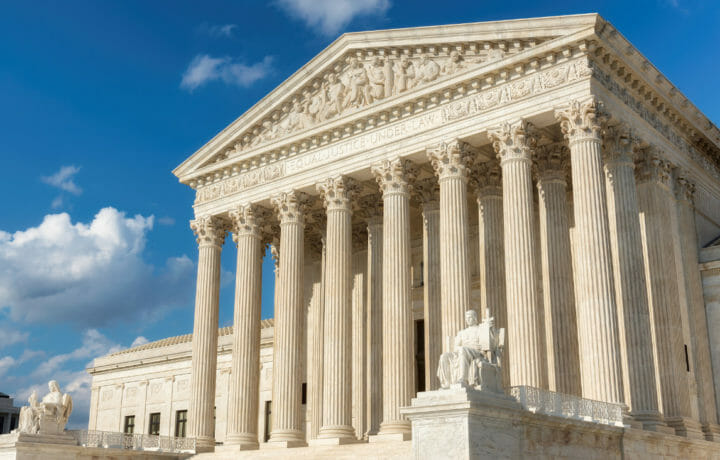Veterans with multiple qualifying service periods now have access to expanded GI Bill benefits following a landmark Supreme Court ruling in the Rudisill v. McDonough case. In April 2024, the Supreme Court of the United States decided that veterans who served at least two periods of service – one that qualifies for the Montgomery GI Bill (MGIB) and another that qualifies for the Post-9/11 GI Bill (PGIB) – may be able to receive additional GI Bill education benefits. This decision significantly improves post-secondary education opportunities for approximately 1.7 million veterans having both GI Bills, allowing them to access up to 48 months of combined benefits.
Background on the GI Bill Decision
As noted, back on Tuesday, April 16, 2024, the Supreme Court ruled 7-2 in favor of James Rudisill in the Rudisill vs McDonough case that had been an ongoing fight for 10 years. James Rudisill is an eight-year veteran with three tours of combat service, including Iraq and Afghanistan. Because he had three separate periods of eligibility as far as GI Bills go, and he paid into the Montgomery GI Bill-Active Duty (MGIB-AD), he has both the MGIB-AD and PGIB.
By law, GI Bill benefits are capped at a maximum of 48 months and Rudisill was not contesting that part. At the heart of his lawsuit was the VA’s interpretation of the federal law in regard to GI Bills and how they use that interpretation in dictating how veterans use their earned GI Bills. Before the ruling, the VA would only allow veterans, to use their GI Bills in a certain order – and even though they were eligible for 36 months under each GI Bill, they could only use a maximum of 48 months by law.
For example, if using the MGIB-AD and they wanted to switch to the Post 9/11 GI Bill (PGIB), they had to give up their remaining MGIB-AD benefits and they would only get the same number of months of PGIB that they had left under the MGIB-AD and not the additional year of benefits.
The only way to use both was to first exhaust their MGIB-AD and then switch to the PGIB to get the additional 12 months. If veterans wanted to switch to their PGIB right away, then all they got was the 36 months of PGIB benefits and not the additional year under the MGIB-AD.
What’s New?
Because veterans were previously required to waive their MGIB-AD benefits to access the Post-9/11 GI Bill, they often left unused MGIB benefits. The decision in the Rudisill case changes that in the following ways:
- No More Waivers: Veterans no longer need to forfeit their MGIB-AD benefits when using the Post-9/11 GI Bill.
- Reclaim Unused Benefits: Veterans who previously waived their MGIB benefits can now revoke those waivers and reclaim any unused entitlements.
- Extended Benefits: Veterans with qualifying services can now leverage up to 48 months of combined benefits, providing extended time and flexibility to pursue their educational and career goals.
- 48-Month Cap Still In Place: Note that the maximum number of months of benefits is still capped at 48 months; that did not change, nor was it ever part of the case.
- Must Be Used Separately: This did not change. Multiple GI Bills may not be used at the same time, however, now veterans can switch back and forth between programs.
How to Access Expanded Benefits
For veterans who have used their GI Bill benefits after August 15, 2018, or will be applying for the first time, the VA should contact you about your eligibility.
If you last used your GI Bill benefits before August 15, 2018, then you must submit a claim and the VA will notify you if you have outstanding benefits you can still use.
Or… eligible veterans can follow these steps to unlock their additional benefits right now:
- Submit VA Form 22-1995: Indicate that you are requesting a “Rudisill review.”
- Follow-up with the VA: Ensure your application is processed and your benefits are recalculated by staying in contact with the VA.
- Updated Delimiting Date: Veterans whose applications are approved will get a new MGIB-AD expiration date calculated at 10 years from their date of application. Veterans with the PGIB getting out before January 1, 2013, will get a new delimiting date of 15 years from their date of application if they have benefits left to use. Veterans getting out after January 1, 201,3 have no delimiting date as that was one of the changes under the Forever GI Bill.
Make Note of This Date
Veterans have until October 1, 2030, to apply for recalculated benefits, but acting quickly is recommended to maximize this opportunity – especially if you are ready to use these benefits now.
However, if you do not plan on using your benefits right away, wait to apply until you are ready so that your benefits don’t expire before you use them.
You can read more about the Rudisill Decision on the VA’s website.
Why This Ruling Matters
This ruling is finally a transformative win for veterans who have served multiple qualifying periods of service. By granting access to up to 48 months of education benefits, it empowers veterans to pursue degrees, certifications, or vocational training programs that can advance their careers and improve their quality of life.
This expanded flexibility ensures that veterans receive the full range of benefits they’ve earned through their service, helping them achieve their aspirations without leaving any opportunities on the table.



